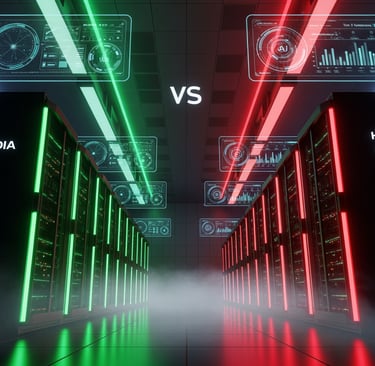Jensen Huang: Huawei Now a “World-Class” NVIDIA Rival
In a rare public warning, NVIDIA chief Jensen Huang admitted Huawei has moved from customer to “world-class competitor” as Ascend chips close the gap on H100 performance.
CHINAAI, DATA & EMERGINGNVIDIA


“It Would Be Foolish to Underestimate Huawei” – Jensen Huang Declares Shenzhen Giant NVIDIA’s New Arch-Rival
1. Opening: A CEO’s Wake-Up Call
Speaking to reporters after NVIDIA’s Q3 2025 earnings, Jensen Huang dropped the sound-bite Wall Street will remember: “Huawei is no longer an aspiring player; they are a world-class competitor.” The candid remark, streamed live on 20 November 2025, marks the first time the CEO has publicly elevated any single rival to parity with his own silicon empire.
2. From GPU Buyer to Benchmark Beater
Less than 36 months ago Huawei still ordered H100s by the thousands for its cloud arm. Export controls changed the math. Forced to replace NVIDIA hardware, Huawei accelerated its home-grown Ascend 910B, then leap-frogged to 910C in mid-2025. Internal Baidu tests—leaked this month—show eight 910Cs training a Llama-2-70B model only 8 % slower than eight H100s while consuming 12 % less energy for long-context inference. The numbers shocked NVIDIA engineers, who had modelled a 30 % gap.
3. CloudMatrix: The Super-Cluster That Rivals DGX
Huawei’s Atlas 950 SuperCluster, officially unveiled at the Shenzhen tech fair, bundles 512,000 Ascend chips in one fat-tree network. Company slides claim 6.7× the raw FP16 AI FLOPS of NVIDIA’s forthcoming NVL144 node. Jensen Huang conceded the topology is “the most aggressive scale-out we have seen outside our own labs.” Translation: Huawei can now sell a turnkey super-pod that matches or beats DGX in raw throughput.
4. Software: CANN’s Quiet Land-Grab
Hardware is only half the battle; software ecosystems decide stickiness. Huawei’s CANN 6.0 (Compute Architecture for Neural Networks) still trails CUDA’s library depth, but the gap is narrowing. Major Chinese frameworks—Paddle, MindSpore, Jittor—now compile natively to CANN. ByteDance disclosed that 78 % of its new workloads already target Ascend first, H100 second. Each migration erodes NVIDIA’s legendary lock-in.
5. Market Access: Export Ban Becomes Huawei’s Shield
U.S. rules bar NVIDIA from shipping H200 and Blackwell to most Chinese data-centres. Jensen admits the restriction “accelerated Huawei’s R&D by at least two years” because captive demand guarantees massive scale. Even if Washington reopened the door tomorrow, customers would face re-certification costs; many now prefer to stay inside Huawei’s walled garden.
6. Financial Impact on NVIDIA
Wall Street reacted within minutes of Huang’s comment: NVIDIA stock slipped 4.1 % in after-hours trading, wiping $132 billion off market cap. Analysts cite China’s 25 % share of global AI silicon spend; losing even half of that to Huawei would dent NVIDIA’s $60 billion data-center run-rate by roughly $7–8 billion annually.
7. What Happens Next?
Road-map arms race: Huawei already tapes out Ascend 920 (5 nm, 1,024 GB/s HBM4) for 2026, while NVIDIA races to ship Blackwell Ultra at 3 nm.
Price war: Huawei quotes 30 % less $/FLOPS than H100 bundles, forcing NVIDIA to unbundle software licences for the first time.
Geopolitical chess: U.S. lawmakers debate tightening controls on EDA tools and chip-making gear; China responds with $40 billion in domestic fab subsidies.
8. Bottom Line
Jensen Huang’s candid warning signals a tectonic shift: the era of unchallenged NVIDIA dominance is over. Huawei’s vertically integrated stack—chips, systems, software, cloud—has become the first credible alternative to CUDA. For data-centre buyers worldwide, the conversation is no longer “which NVIDIA GPU?” but “NVIDIA or Huawei?”—a choice that didn’t exist just one year ago.
Sources
South China Morning Post, 15 Nov 2025
Reuters Tech, 20 Nov 2025
TechNode, 12 Nov 2025
Financial Times, 21 Nov 2025
Huawei CloudMatrix white-paper, Nov 2025


